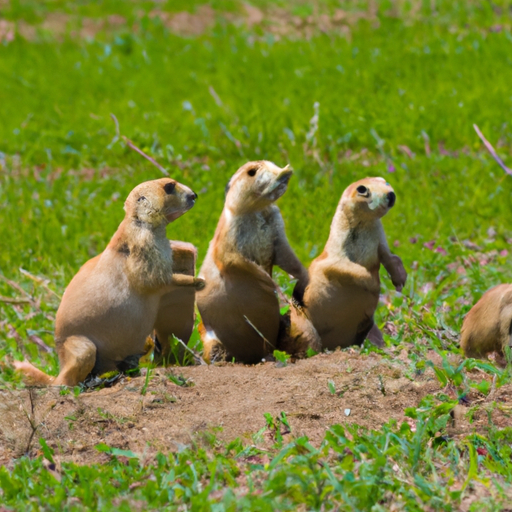As a caregiver, you have a natural knack for nurturing and protecting. This instinct isn’t just limited to humans. In the animal kingdom, various species exhibit exceptional caregiving behaviors that ensure the survival of their offspring. Today, let’s focus on the prairie dogs and how their behavior secures their offspring’s survival.
H2: The Power of Vigilance
Prairie dogs are known for their intense vigilance. Just like you, they are always on the lookout for potential threats to their young ones. Here’s how they do it:
-
Sentry Duty: One prairie dog typically stands guard while the others forage for food. The ‘sentry’ dog has a higher vantage point to spot predators.
-
Alarm Calls: If a predator is sighted, the sentry gives a unique, high-pitched call. This alarm call is specific to the type of predator spotted, alerting the rest of the group appropriately.
This vigilance ensures that the young ones have ample warning to retreat to safety.
H2: The Art of Burrow Construction
Prairie dogs utilize their environment to the fullest, creating elaborate underground burrows. These burrows serve as a protective home for their offspring:
- Multiple Entrances and Exits: These allow for quick escapes from predators.
- Nurseries: Separate chambers are designated for raising the young.
- Food Storage: They have specific areas for storing food, ensuring nourishment is available for the young ones.
| Burrow Features | Function |
|---|---|
| Entrances/Exits | Quick escape from predators |
| Nurseries | Safe spaces for raising young |
| Food Storage | Easy access to nourishment |
H2: The Role of Social Behavior
Just as you may rely on your community for support, prairie dogs also live in social groups called ‘coteries.’ This social behavior is vital for their survival:
- Shared Duties: Tasks like sentry duty and burrow maintenance are shared among group members, reducing individual workload.
- Collective Defense: When a threat is detected, the entire group participates in the defense.
- Information Sharing: Knowledge about threats and resources is shared within the group, increasing overall survival chances.
H2: The Importance of Nurturing
Prairie dog mothers, like human caregivers, are nurturing and protective. Their nurturing behavior includes:
- Feeding: They ensure their offspring are well-fed, often storing food in their burrows.
- Grooming: Regular grooming keeps the young ones clean and free from parasites.
- Teaching: They actively teach their offspring vital survival skills such as foraging and alarm calls.
H2: Investment in Offspring’s Future
Prairie dogs invest heavily in their offspring’s future. This includes long-term commitment to raising their young, often staying with them until they are fully grown and can fend for themselves.
FAQ
Q1: How long do prairie dogs stay with their young?
A1: Prairie dogs typically stay with their young until they are fully grown and can fend for themselves.
Q2: How do prairie dogs warn each other of danger?
A2: Prairie dogs use unique, high-pitched alarm calls to warn each other of danger.
Q3: What is a coterie?
A3: A coterie is a social group of prairie dogs.
Q4: What are some survival skills prairie dogs teach their offspring?
A4: Prairie dogs teach their offspring vital survival skills such as foraging and alarm calls.
Q5: How do prairie dogs ensure their offspring are well-fed?
A5: Prairie dogs store food in their burrows to ensure their offspring are well-fed.



